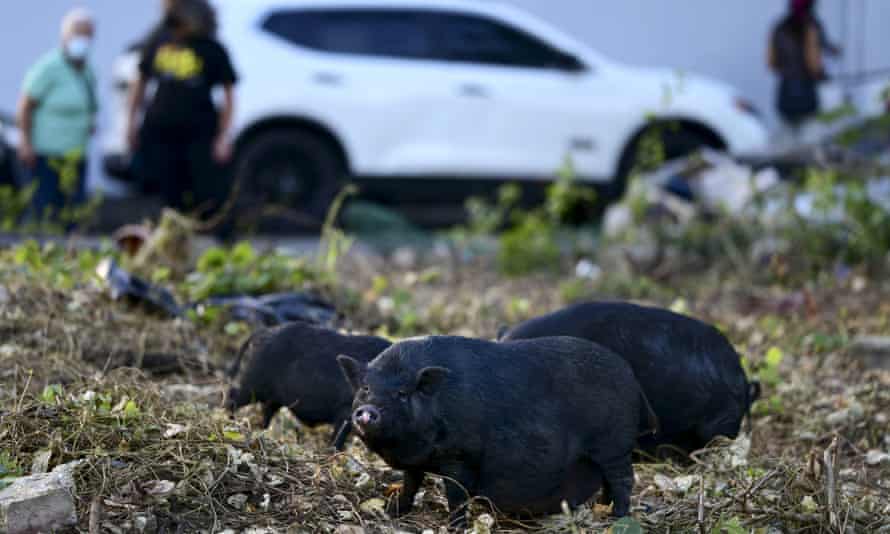Extract from The Guardian
Researchers estimate the invasive species releases 4.9m metric tonnes of greenhouse gas annually by uprooting soil.

Feral Vietnamese pot-bellied pigs roam in Puerto Rico, where they reproduced at such a rate the government declared a health emergency.
Last modified on Tue 20 Jul 2021 05.01 AEST
The climate impact of wild pigs around the world is equivalent to the greenhouse gas emissions of 1.1m cars annually, according to new research.
Modelling by an international team of researchers estimates that feral pigs release 4.9m metric tonnes of carbon dioxide each year globally by uprooting soil.
Researcher Dr Christopher O’Bryan of the University of Queensland said feral pigs were one of the most widespread vertebrate invasive species on the planet.
“Pigs are native to Europe and parts of Asia, but they’ve been introduced to every continent except Antarctica,” he said.
Feral hogs uproot soil while searching for food, in a process O’Bryan likens to “mini tractors that are ploughing soil”. Doing so exposes microbes in the soil to oxygen. The microbes “reproduce at a rapid rate and then that can produce carbon emissions [in the form of] CO2.”
“Any form of land-use change can have an effect on carbon emissions from the soil,” O’Bryan said. “The same thing happens when you put a tractor through a field or you deforest land.”
The researchers estimate that wild pigs are uprooting an area upwards of 36,000 sq km (14,000 sq miles) in regions where they are not native.
Oceania had the largest area of land disturbed by wild pigs – roughly 22,000 sq km – followed by North America. The pigs in Oceania accounted for more than 60% of the animal’s estimated yearly emissions, emitting nearly 3m metric tonnes of CO2, equivalent to about 643,000 cars.
The findings of the study, published in the journal Global Change Biology, were drawn from three models. One model predicted wild pig density globally across 10,000 simulations, based on existing information about wild pig populations and locations.
A second model converted pig density into an area of disturbed land, and a third estimated the amount of CO2 emitted when soil is disturbed.
Nicholas Patton, a PhD student at the University of Canterbury, said there was some uncertainty in the modelling as a result of the variability of the carbon content in soils and the densities of wild pigs in different areas.
“Areas that are peat bogs or black soils … especially ones that have a lot of moisture, they’re a sink for carbon,” said Patton. “When pigs get in there and root around, they have a lot more potential for that carbon to be released [than from other soils].”
In addition to their climate impacts, the destructive impact of wild hogs has been well documented. O’Bryan said managing the animals was a challenge that would involve prioritising whichever of their impacts was deemed most significant.
“If all we care about is agriculture, then the cost and the benefits of managing pigs will be different than if all we cared about was carbon emissions, than if all we cared about was biodiversity.
“At the end of the day, feral pigs are a human problem. We’ve spread them around the world. This is another human-mediated climate impact.”
No comments:
Post a Comment